Living under the majestic snowcapped peaks of the Rocky Mountains in Colorado is a breathtaking experience. However, this natural beauty comes with the challenge of heavy snowfalls and icy conditions, making it essential to prepare your home's roof for the winter season. A well-maintained roof ensures not only your safety and comfort but also prevents costly damage. In this blog post, we walk you through five crucial steps to safeguard your roof when the Colorado winter unleashes its might.
5 Steps to Protect Your Roof from Heavy Snow and Ice in Colorado
Colorado’s winters are picturesque but also pose a significant risk to the structural integrity of your property, with heavy snow loads and ice damming being a common culprit of roof damage. Roof maintenance, therefore, is more than a seasonal routine, it's a vital part of being a responsible homeowner. During winter, it’s crucial that homeowners bolster their roof's defense mechanisms, so it not only withstands the elements but also adds to their home's longevity and safety. The best way to do that is to follow these five steps:
Step 1: Clear the Gutters
Gutters serve as your roof’s drainage system. When they're clogged with leaves, debris, or ice, water has nowhere to go, leading to potential leaks and damage.
Importance of Clean Gutters
Leaving gutters uncleared can lead to water seepage into the house and can result in gutters pulling away from the roof due to the added weight. This makes cleaning gutters a crucial preventive measure against rot, mold, and structural pressure.
Tools and Techniques for Gutter Cleaning
Use a sturdy ladder and a pair of gloves. A good quality gutter scoop or a small trowel can come in handy for removing debris. Work methodically from the downspout outwards and finish the job with a hose to clear small clogs. Cleaning gutters can be dangerous, so it may be best to hire a roofer or gutter cleaning specialist to clean your home’s gutters.
Step 2: Trim Overhanging Branches
Overhanging tree branches can pose a direct hazard to your roof in heavy snow. When heavy snow accumulates, the added pressure can cause the branches to break, fall on your roof, and potentially lead to roof punctures.
Other Risks of Overhanging Branches
In addition to the risk of direct damage from heavy snow, branches can scrape against your roof during windstorms, creating abrasions in the surface and wearing down protective layers.
Safe Tree Trimming Practices
Always use safety equipment and work with a partner to cut branches effectively. If you're not confident in your ability to prune large branches, it’s best to hire a professional tree service. Be sure to cut branches at a distance from the trunk, avoiding the branch collar to ensure the tree can heal properly.
Step 3: Insulate the Attic
The attic may seem isolated from your daily living space, but it plays a critical role in maintaining your home’s overall temperature and, consequently, the stability of your roof.
Benefits of Attic Insulation
Proper insulation reduces the likelihood of ice dams, which occur when the attic is too warm and causes snow on the roof to melt and then refreeze. This can prevent water from running off the roof and cause leaking into the home.
Tips for Insulating the Attic Properly
Ensure that you not only have adequate insulation but also that it is evenly spread without any gaps or compressed areas. Don’t cover vents and remember to insulate any openings around pipes and other installations.
Step 4: Install Snow Guards
Snow guards are a type of roof accessory that helps to stabilize the distribution of snow on the roof, preventing sudden avalanches that can cause damage to your property and pose a safety risk.
Purpose of Snow Guards
By holding snow in place on the roof, snow guards allow it to melt and drain off more gradually and safely. This helps to prevent large sheets of snow and ice from falling in one heavy slide.
How to Install Snow Guards on Your Roof
Installation involves fastening the snow guards to your roof's material, whether it's asphalt shingles, metal, or slate. Plan the layout carefully to ensure a balanced distribution of stress. For best results, seek professional guidance for optimal placement.
Step 5: Monitor and Remove Snow Buildup
Despite your best efforts, some snow accumulation on your roof is inevitable. Monitoring and, when necessary, removing this snow can be crucial to preventing overloading and structural damage.
Signs of Excessive Snow Buildup
Sagging or creaking sounds from your roof, as well as noticeable depressions, are signs of excessive snow load. Leaks, cracked walls, and doors that pop open are other indicators.
Safe Methods for Snow Removal
Use a sturdy roof rake—a long-handled tool designed for this purpose—to remove snow from the safety of the ground. Position the rake in such a way that you can pull the snow down without causing damage to the roof. Be cautious of where the snow will fall, ensuring your safety and that of anyone walking below.
A Winter-Ready Roof is a Wise Investment
The effort you put into safeguarding your roof is an investment in your family’s security and your home's longevity. By being proactive and completing the five steps above, you'll significantly reduce the risks of winter weather causing damage to one of your home's most critical elements. Embrace these tasks as part of your seasonal traditions and take pride in preparing your home for the magnificent winter landscapes that Colorado brings annually.
To learn more about preparing your home’s roof for winter, or for help with roofing services in Columbine, call Columbine Roofing & Solar at (303) 952-4242 or contact us online today.


